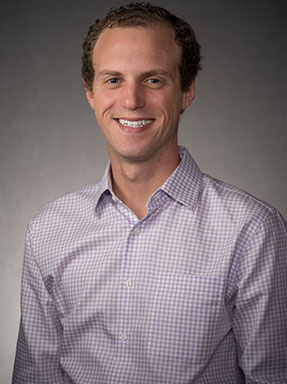With Prestigious Fellowship, Ritchie Student Brings Biomechanics to the Masses

Abby Eustace, her professors say, is not a big talker. Fortunately, her work more than speaks for itself.
Not only is the mild-mannered graduate student forging ahead with potentially revolutionary research in biomechanics, but she has the recognition to back it up.
Eustace, a native of Parker, Colorado, is the first recipient of the selective and prestigious National Science Foundation Graduate Research Fellowship (GRF) the Ritchie School of Engineering & Computer Science has ever recruited to campus. Only four other fellows have enrolled at DU in the last decade, two each at the Graduate School of Professional Psychology and the Division of Natural Sciences & Mathematics.
Across the nation, more than 12,000 outstanding students in science, technology, engineering and math (STEM) applied for the fellowship and its funding, which allows them, essentially, to attend the graduate program of their choice. Only 2,000 are selected. Because the fellowship comes with a cost of education allowance and an annual stipend, programs don’t need to apply for grants or reallocate money to accommodate the students.
“These students are the best of the best,” says Matt Gordon, chair of the Department of Mechanical & Materials Engineering. “They’re very strong. You realize how much they have to accomplish as undergraduates [to receive this].”
But even before receiving an award that acts as a golden ticket to higher education, Eustace, a graduate of the Colorado School of Mines, had her sights set on the University of Denver.
“You gain a much greater skill set here than other universities I was looking at,” she explains. “The labs are very multidisciplinary.”
She saw the Human Dynamics Lab on the fourth floor of the engineering building as the perfect place to study the way humans move. The current arrangement features an expensive network of cameras and sensors, which students and faculty use to pinpoint subtle movements in the human body. Computer software displays muscle forces, joint angles and more, highlighting when an area moves differently than it is supposed to.
Eustace is using the high-tech setup to develop a lower-tech alternative. Her goal is to use a single stereo camera to do the work the lab’s 12-camera network does. Ultimately, with a cheaper alternative and easy-to-use software, Eustace wants to make the technology more accessible to the medical community.
“A lot of times people are limited because of the cost of the system,” she says. “The costs [make it so] they can’t potentially get the treatment or the quality of treatment they need. A lot of insurance plans wouldn’t pay for this stuff that would help you surgically or help you rehab.”
Her research interest, Eustace says, comes from time spent volunteering with the National Sports Center for the Disabled. Working with children with cerebral palsy opened her eyes to the obstacles some populations face, particularly when it comes to affording and accessing medical treatment.
With the product she hopes to develop, Eustace says there would be no need for a special lab to analyze a patient’s movement; nor would there be a need for highly trained experts to interpret it. Instead, she says, a patient would need merely to walk down the hallway at a clinician’s office providing a doctor with easy-to-read data within minutes.
Eustace expects to complete her research over the course of five years, as she earns her PhD.
“Abby’s been great,” says Paul Rullkoetter, a professor at the Ritchie School. “She quite luckily for us has come here with a nice cohort of new students.”
Together, Gordon adds, they form one of the strongest classes of incoming graduate students in recent memory. Their prowess, and the recognition Eustace has received, will go a long way toward putting DU on the national radar.
“I really think it’s such a testament to the strength of the program,” Gordon says. The new engineering building, opened in 2017, houses the state-of-the-art space and equipment essential to cutting-edge work. “We now have a cadaver lab. We have the whole package now under one roof. I think there are lots of opportunities now on the research side because of the growth and the new space and the labs have made it much more appealing to a student.”








